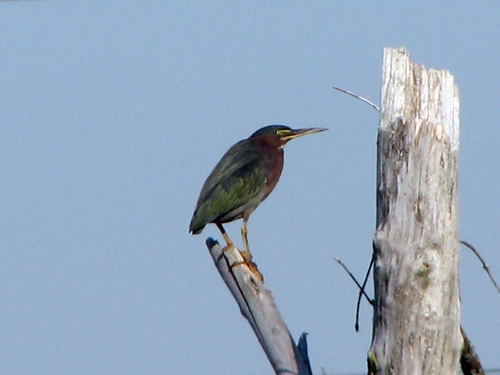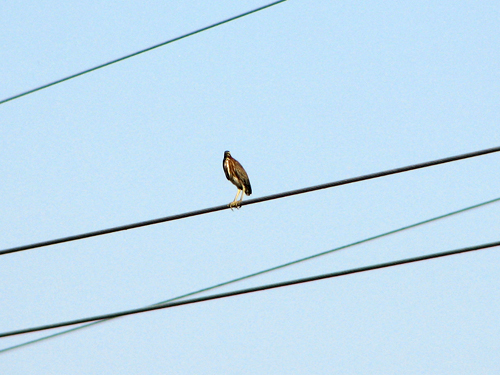Mourning Doves in love
Here’s a sweet sign of spring. These two Mourning Doves were having a date on our patio yesterday afternoon.
Here’s a sweet sign of spring. These two Mourning Doves were having a date on our patio yesterday afternoon.
Yesterday Arthur and I visited Chicago’s Shedd Aquarium and before we went inside I spent some time watching a small group of American Crows that was hanging around the entrance. Mostly they were flying from tree to tree, making the typical crow racket, but I noticed this one beaking around in the snow. I’m not sure if he was looking for something or just playing, but it was fun to watch and wonder.
During one of our visits to Viera Wetlands, we saw this Anhinga playing with a piece of pipe. Anhingas hunt by swimming under water and spearing fish with their sharp bills. They then have to manipulate their prey in order to eat it, which usually involves tossing the fish into the air from the perpendicular and catching it as it falls parallel into its throat. These photos I found on Flickr show the toss and catch process. We were both enthralled and amused watching this Anhinga’s antics as it practiced its prey-flipping skills.
For most of the summer we only manage to spot Green Herons in flight. I know they’re here, hunting in ponds and streams, even nesting and roosting in trees, but they’re kind of secretive.

Last week at Rollins we saw three juvenile herons acting very un-heronlike, perching out in the open. They flew from snag to snag and one even landed on a utility wire.


The streaked necks would give them away as juveniles, if their behavior didn’t tip you off first.
Earlier this season we heard a funny story about Eastern Screech Owls from a bird walk leader. He told of checking the Wood Duck boxes on his property one year and finding an Eastern Screech Owl inside one. The owl didn’t seem to mind his presence so he gingerly started to clear out the box around the owl. Still the owl didn’t move. He managed to clear out the box by gently moving the owl from one side of the box to the other as he cleaned. The roosting owl didn’t mind at all.
Later, our trip leader said, he learned that if found while roosting in the daytime, Eastern Screech Owls don’t mind being handled and might even like to have a scratch on the back of the neck. Sure enough, the next nest season, when he went to clear out one of the Wood Duck nest boxes, he found a roosting owl. He gave it a neck scratch, which it seemed to enjoy.
In the following years, to make nest box cleaning go a little bit faster, he would bring his wife out to the boxes with him. When he climbed up the ladder to clean out the box, if an owl was inside, he would pass the owl down to his wife to hold onto while he quickly cleared debris out of the box.
I tried to find information about similar behavior online but I haven’t been able to find anything. The guide’s story sounds unbelievable to me, but extremely funny. Have you heard of something like this? Could it be true?
During our Saturday walk at Rollins, we saw this Sandhill Crane family (the same small family that we had previously observed) being divebombed by Red-winged Blackbirds. And those blackbirds aren’t kidding – see how they really smack into the adult cranes!
Now we knew that cranes eat crustaceans, but we didn’t realize these meat-eaters would also be a threat to the Red-winged Blackbirds – or rather, their young. A post on Laura Erickson’s Twin Beaks blog (and this one) this week cleared that up though. Yikes.
A recent study indicates that birds living in urban environments sing faster, shorter songs than their country counterparts. The study was conducted by Dr. Hans Slabbekoorn of the University of Leiden.
Songs of Great Tits in different European cities were recorded and compared to songs from the same species in nearby natural areas. City birds were found to use higher frequencies in their songs, and to sing faster.